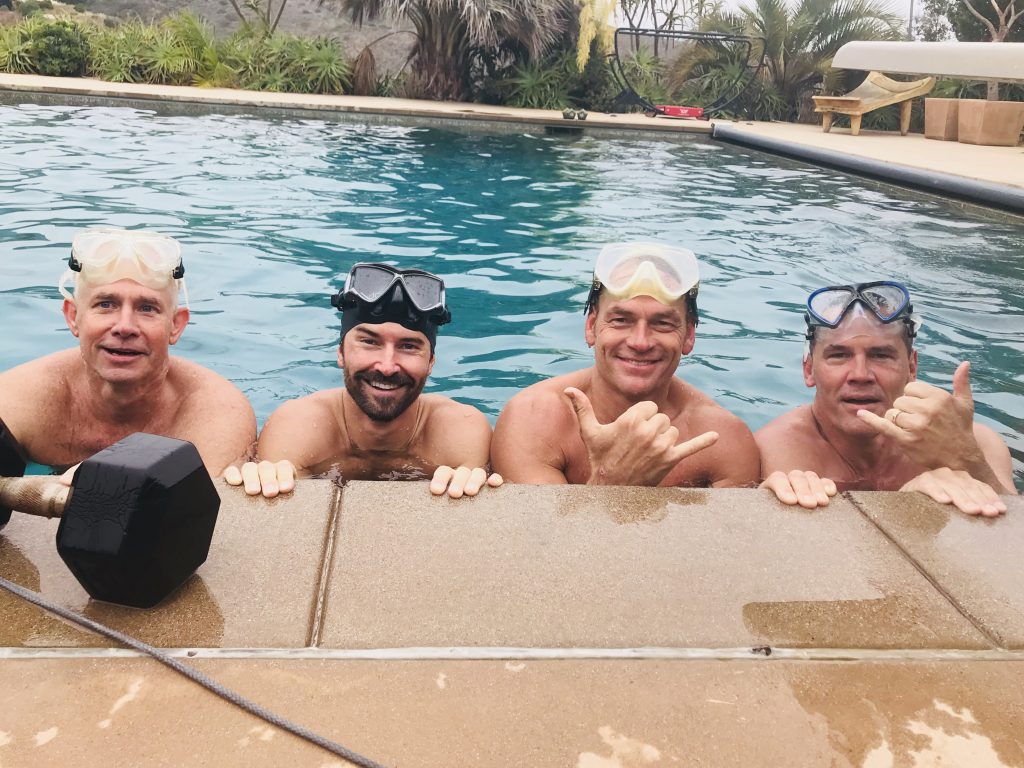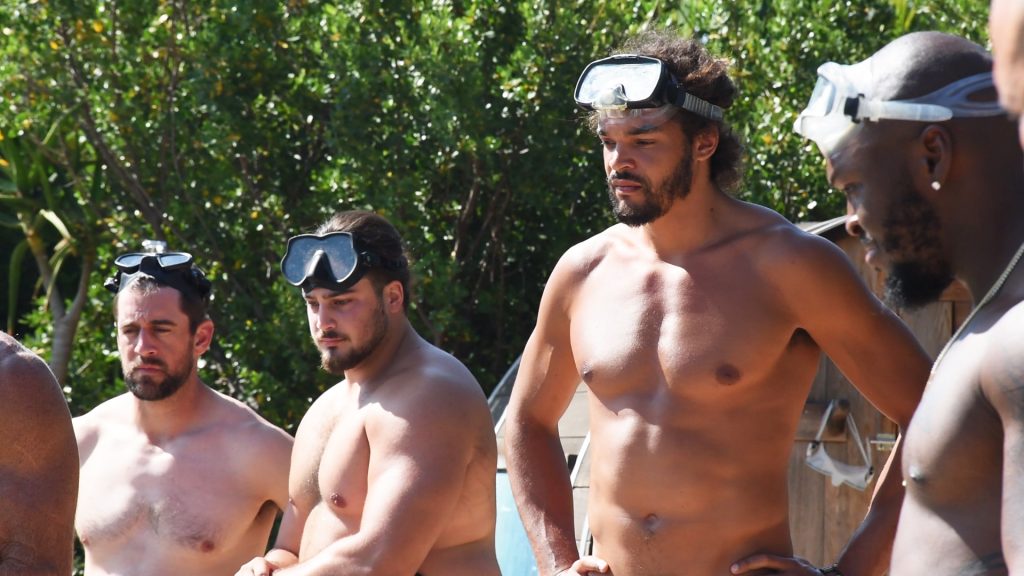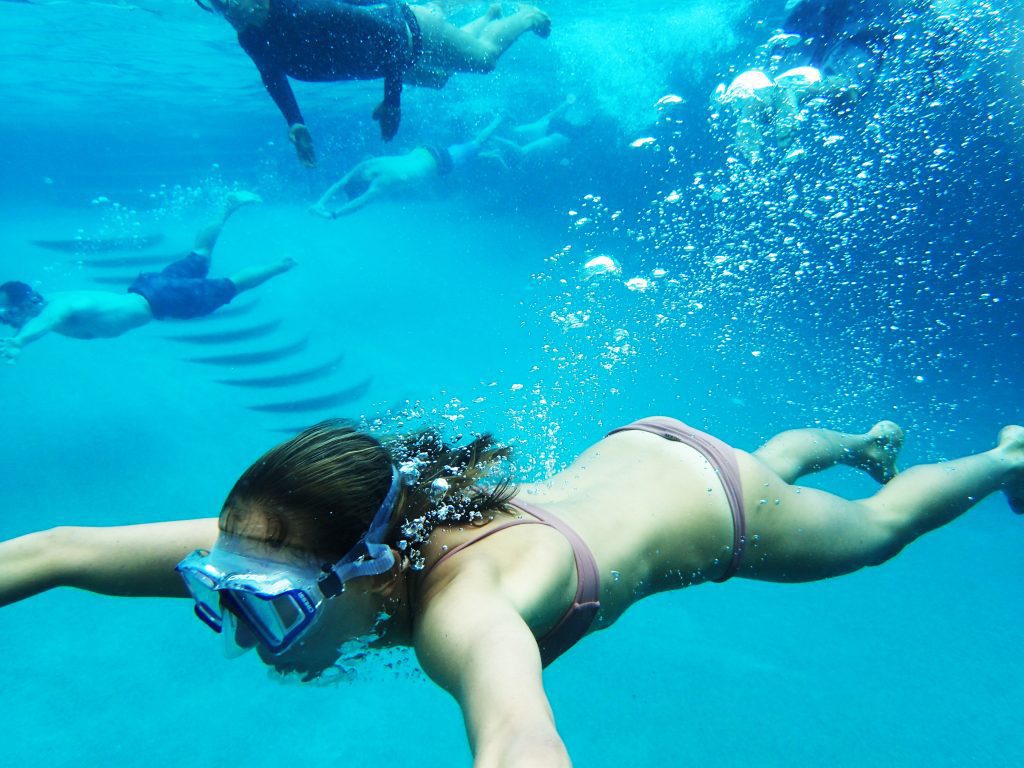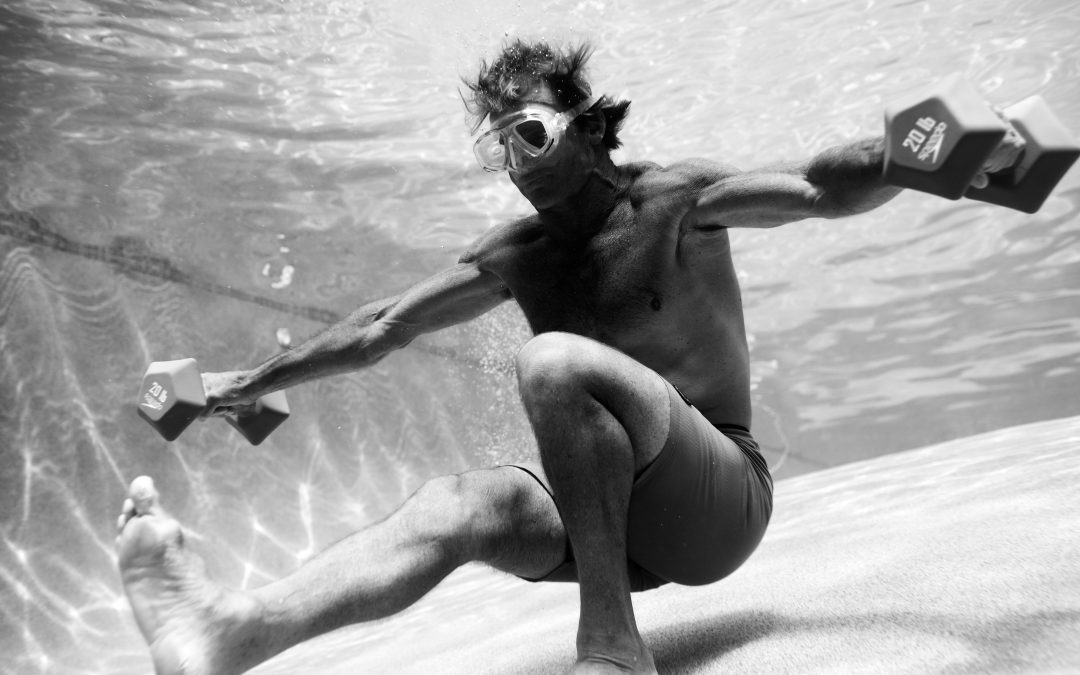Laird Hamilton and Gabrielle Reece, two iconic athletes have spent their lives doing, learning, experimenting with all forms of physical exercises to advance their skills in strength, endurance, speed, and efficiency. Together, they have been working on a new type of training, XPT Water; a ballistic, strength, cardiovascular and mental training program performed in shallow and deep water.
Their company XPT has just launched its certification program XPT Water Pro that is NASM and ACE accredited. Developed with the help of fitness professionals PJ Nestler, Mark Roberts, Dr. Kelly Starrett, Patrick McKeown, and Dr. Andy Galpin.
During the development phase of XPT Water (10 + years), Laird and Gabby opened their training grounds three days a week to friends and colleagues to create, test, explore, and fine tune the diverse offerings of XPT Water.
The Squad:
- Pro Athletes (Kevin Durant, Joakim Noah, Aaron Rogers, Paul George, Karl Anthony Towns, Bill Romanowski, Danny Cipriani, Kerri Walsh Jennings, Victoria Azarenka, Kelly Slater, Clay Hensley, Blake Griffen)
- Musicians (Kenny Chesney, Mike D, Rick Rubin, Sheryl Crow)
- Actors (Orlando Bloom, Josh Brolin, John McGinley, Will Smith)
- Corporate Executives (Hutch Parker, Blake Mycoski, Randall Wallace, Kelly Meyer)
- Performance Coaches/Health Influencers/P.T’s/Dr.’s (Erik Kortland USTA Youth Development, Kenny Kane, Darin Olien, Brian Mackenzie, Ben Greenfield, Tim Ferris, Dr Justin Majer, Dr. Ellatrache, Adam Friedman, Neil Strauss).
- Elite Military – Special Ops, Seals
- and of course the rest of their tribe who show up with a smile and get it done!

Just another day at the Laird Hamilton pool doing some XPT water training: Hutch Parker, Brandon Jenner, Darin Olien, Josh Brolin
UNIQUE FITNESS
XPT Water is where all the three central components of XPT – Breathe, Move, and Recover – converge to create a unique fitness method. Pool training is a big part of Laird and Gabby’s fitness routine and has evolved into an extremely scalable program that can be implemented for any fitness level.
This water exercise curriculum consists of over 30 unique exercises to perform in shallow and deep-water swimming pools / oceans at times incorporating dumbbells, in the most practical and safe manor. We strongly recommend people do not try these exercises without an certified XPT trainer.
XPT is continuously building it’s water program and will be adding on various new types of exercises in 2019.
XPT CERTIFICATIONS
XPT began their certification program in March of 2018. Since March of 2019, they have certified over 150 coaches and have just began to build their tribe.
Learn how to properly and safely teach both shallow and deep water XPT Exercises.
The XPT Level 1 Certification includes training in all things XPT Water / Shallow Water Exercises but includes Performance Breathing and Exposure certifications.
-These certifications are taught around the world.
The XPT Water Certification includes training in all things XPT Water / Shallow and DEEP Exercises
-These certifications are only offered at Gabby and Laird’s home in Malibu.
Why People Love XPT Water
Novelty
Unless you grew up as a water sports enthusiast, water training provides a different stimulus that challenges your body in a new way and forces you to adapt. This is how we avoid or break through plateaus, create sustainable progress, and keep workout routines fun and engaging.

Mental Fortitude
The power of the mind to influence the physical body is astounding and well documented in scientific literature. There are many mental practices that have massive carry over to physical and cognitive performance. Mindfulness practice– i.e. the act of intentionally bringing conscious awareness to the present task/moment – has been shown to reduce stress and anxiety (Wells, et al., 2012), avoid burnout (Moen, et al., 2015), and decrease negative health behaviors like binge eating, poor sleep quality, and lack of physical exercise (Roberts & Danoff-Burg, 2010). XPT Pool Training offers a rare opportunity to be truly in the moment and to detach from all of the noise that seems to distract us throughout the rest of our day. Repeating the practice several days a week can provide a tremendous amount of stress reduction.



Thoughts influence our emotions, which in turn impact our behavior. Self-talk is a highly effective mental skill for framing our focus. It is not something people tend to focus on consciously, but it happens regardless of our conscious control. It is estimated that we talk to ourselves about 1,000 times per minute (Rotella, 2015). However, without proper training, we tend to focus most of this talk, particularly in the face of adversity, on negative thoughts (Rotella, 2015). Positive self-talk can be used as a powerful tool to improve performance across a variety of tasks. Athletes using positive self-talk were able to reduce their rate of perceived exertion and improve performance in high intensity cycling exercises (Blanchfield, et al., 2014) and improve sport performance in competitive swimming (Hatzigeorgiadis, et al., 2014). It has also been indicated that higher “skilled athletes report using [positive] self-talk in a significantly more planned and consistent manner, as well as had greater belief in use of their self-talk, as compared to their less skilled counterparts,” (Hardy, et al., 2004).
Positive self-talk also helps to eliminate the negative thoughts that tend to creep into our heads during stressful situations or times of adversity. Our brains are wired for negativity, which from an evolutionary standpoint helps us to assess threats and mitigate risky behaviors. However, when it comes to optimizing performance, negative self-talk can be detrimental to success. In his book How Champions Think, Dr. Bob Rotella puts it perfectly, “While the correlation between optimism and success is imperfect, there is almost a perfect correlation between negative thinking and failure,” (Rotella, 2015). Creating a practice for improving positive self-talk during moments of extreme stress or adversity can not only improve performance in those tasks, but also lateralize into other aspects of daily life.

We believe there are massive benefits in a practice that forces you to hit that wall where you don’t think it’s possible to push further, and yet find a way to persevere and continue. XPT Water Training will quickly help you find the point at which you don’t think you can keep going. It will also equip you to understand that the only way to get past this is to calm, quiet, and focus your mind (mindfulness), and use positive self-talk to fortify the belief that it can be done. We have seen these practices carry over, outside of the pool, into other stressful events or moments of adversity, allowing people to conquer an obstacle once thought to be impossible. The potential implications for this are powerful beyond anything we can currently quantify.
Breathing
Focused breath work is a foundation of the XPT system and underpins many of the benefits of XPT Water Training. During many of the water exercises, you will be performing apnea exercises (holding your breath), which can create a handful of beneficial physiological changes. When the human body is exposed to situations in which there are reduced oxygen levels – such as the experience of high altitude, or by holding your breath – adaptations take place that force the body to increase oxygenation of the blood, delay the onset of lactic acid and fatigue, and improve respiratory muscle strength.

Lower Injury Risk One of the biggest benefits of water training is the lower injury risk compared to working out on land. Due to the density of the water changing the influence of gravity, impact forces are significantly less in the pool. This lower impact on the joints and connective tissues allows people to perform ballistic and plyometric movements with reduced risk of injury. Pool training is commonly used during rehabilitation programs for athletes returning from injury for this reason. In our experience, athletes recovering from injuries have been able to perform movements underwater that they are not yet able to do on land, allowing them to work certain muscles that they were not able to utilize previously, and tax the body in ways that were previously inaccessible.
Recovery
In addition to lowering injury risk, pool training can also be a great method for recovery on days of active rest between intense workout sessions or after competition. As the water unloads a lot of the impact forces coming down during jumping and other underwater movements, most pool exercises are concentric-dominant. Eccentric loading has been shown to create the most tissue damage and stress to the muscles and connective tissue (Mikesky, et al., 1995), therefore by reducing the eccentric load on the muscles, we are minimizing damage to the tissues. When performing exercises that are concentric only, your muscles will still benefit from an increase in local blood flow, bringing the nutrients necessary for tissue repair, while minimizing additional tear down. The compression caused by the water will also help to stimulate blood flow (Turner, 1973), aiding in the recovery process.

Furthermore, circuit training in the pool can elicit aerobic conditioning adaptations, providing benefits to the cardiovascular and pulmonary systems while also creating a recovery response in the musculoskeletal and nervous systems. The additional work of the respiratory muscles during breath holds and breathing with compression of the water acting on the torso provides another unique stressor for improving respiratory muscle strength.
XPT Water exercises and workouts should be done through a certified XPT Coach. Checkout our upcoming certifications.
